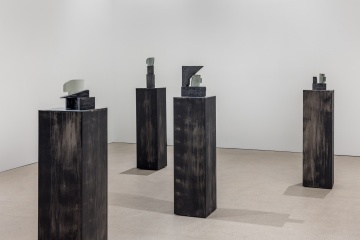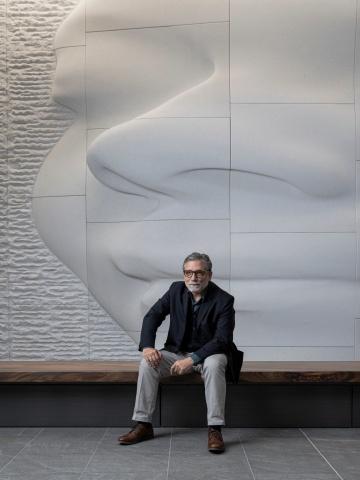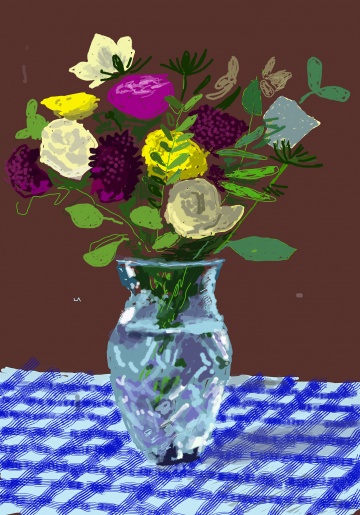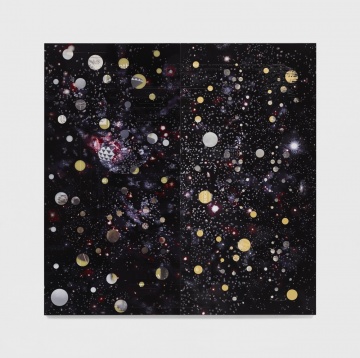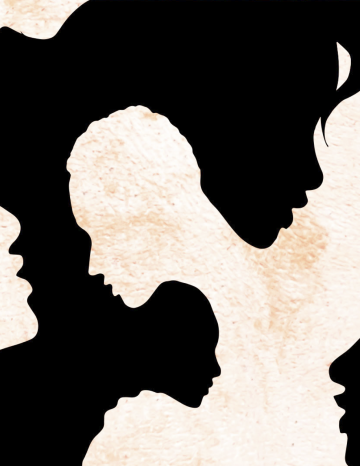Gray
875 North Michigan Avenue, Suite 3800
Chicago, IL 60611
312 642 8877
Also at:
2044 West Carroll Avenue
Chicago, IL 60612
By Appointment
312 883 8277
1018 Madison Avenue, 2nd Floor
New York, NY 10075
212 472 8787
Chicago, IL 60611
312 642 8877
Also at:
2044 West Carroll Avenue
Chicago, IL 60612
By Appointment
312 883 8277
1018 Madison Avenue, 2nd Floor
New York, NY 10075
212 472 8787
Founded in Chicago in 1963, Richard Gray Gallery is located in both Chicago and New York and works with prominent private and institutional clients worldwide as a leading dealer of Modern, Post-War and Contemporary American and European art. The gallery offers artwork of exceptional quality and provides expert counsel in all areas of the field, as well as represents and exhibits emerging and well-established artists of international recognition. With a reputation for excellence, integrity and discretion, Richard Gray Gallery provides high level service and market expertise to new and long-standing collections, advising on the acquisition and evaluation of works of museum quality.
Artists Represented:
McArthur Binion
Jim Dine
Theaster Gates
Ewan Gibbs
David Hockney
Rashid Johnson
Alex Katz
David Klamen
Estate of Ellen Lanyon
Jim Lutes
Jaume Plensa
Leon Polk Smith Foundation
Estate of Evelyn Statsinger
John Stezaker
Estate of John Storrs
Works Available By:
Magdalena Abakanowicz
Josef Albers
Magdalena Abakanowicz
Josef Albers
Milton Avery
Francis Bacon
George Baselitz
Alexander Calder
John Chamberlain
Bethany Collins
Richard Diebenkorn
Jean Dubuffet
Sam Francis
Alberto Giacometti
Harold Gregor
Philip Guston
Hans Hofmann
Jasper Johns
Franz Kline
Willem de Kooning
Fernand Léger
Roy Lichtenstein
Brice Marden
Agnes Martin
Joan Miró
Joan Mitchell
Henry Moore
Robert Motherwell
Pablo Picasso
Jackson Pollock
Robert Rauschenberg
Estate of Judith Rothschild
Mark Rothko
Ed Ruscha
David Smith
Cy Twombly
Andy Warhol

Installation view of David Hockney, Time and More, Space and More. Image courtesy of Richard Gray Gallery
Torkwase Dyson
Of Line and Memory
November 8, 2024 - January 25, 2025
Installed over three distinct spaces, the exhibition debuts a monumental sculpture in steel and painted wood, an immersive installation of new paintings, and new cast glass and wood constructions.
Alexander Calder
CALDER
April 18, 2024 - August 2, 2024
GRAY is pleased to announce Calder, an exhibition of sculptures by Alexander Calder from the 1950s and 60s. The decades at mid-twentieth century were especially significant for the artist, whose objective to create space and movement at ever more immersive scales is expressed by the range of work in the exhibition.
McArthur Binion and Jules Allen
Me and You
April 12, 2024 - May 31, 2024
GRAY is pleased to announce McArthur Binion & Jules Allen: Me and You, a two-person exhibition featuring eleven new paintings by McArthur Binion and a survey of gelatin silver prints by New York-based photographer Jules Allen. Me and You commemorates a forty-year dialogue between the two artists, whose mutual admiration originated in the Black avant-garde of 1980s New York City. Absorbing visual, musical, and poetic influences throughout their careers, both artists pair visual clarity and formal rigor with deeply psychological and emotional content.
Roy Lewis, K. Kofi Moyo, Bob Crawford
So Be It! Asé! Photographic Echoes of FESTAC ’77: Roy Lewis, K. Kofi Moyo, Bob Crawford
October 26, 2023 - January 19, 2024
GRAY is pleased to announce So Be It! Asé! Photographic Echoes of FESTAC ’77: Roy Lewis, K. Kofi Moyo, Bob Crawford. Curated by Romi Crawford, the exhibition unveils visual documentation of one of the most significant, yet lesser known, cultural events of the twentieth century: the Second World Black and African Festival of Arts and Culture, held in Lagos, Nigeria. Known as FESTAC, this Pan-African festival, which convened in early 1977, brought together around 17,000 artists from African countries and Black diaspora communities across the world. The exhibition draws from the archives of Roy Lewis, Bob Crawford, and K. Kofi Moyo, three members of the United States delegation to FESTAC.
Jaume Plensa
Forgotten Dreams
April 7, 2023 - June 3, 2023
For Plensa’s 8th solo exhibition with GRAY, the artist has inscribed twenty-one cast aluminum doors with all thirty articles of the UDHR. Titled Forgotten Dreams, the work expresses the universal themes that have long been central to Plensa’s practice: human connection and peace.
Group Exhibition
Gray at 60
March 31, 2023 - May 26, 2023
GRAY is pleased to announce GRAY at 60, an exhibition and accompanying book commemorating six decades since the gallery’s founding in 1963 by Richard Gray (1928-2018).
Featuring works by sixty historical and living artists whose practices have been integral to the gallery’s vision, GRAY at 60 presents the legacy and future of one of the United States’s longest running galleries. The exhibition opens at GRAY Chicago on January 26, 2023 and remains on view through March 11, and will be on view at GRAY New York from March 31 through May 26.
Amiri Baraka (LeRoi Jones), Dawoud Bey, McArthur Binion, the Black Arts Movement School Modality, Nick Cave, Coco Fusco, Theaster Gates, Rashid Johnson, Tony Lewis, the Staples Jr. Singers, Tavares Strachan, Jan Tichy, jina valentine, Carrie Mae Weems, and Amanda Williams.
Citing Black Geographies
November 17, 2022 - December 23, 2022
Curated by Romi Crawford, a cultural theorist and professor of visual and critical studies at the School of the Art Institute of Chicago, Citing Black Geographies parses dichotomous and elusive notions of black space.
David Hockney
20 Flowers and Some Bigger Pictures
November 4, 2022 - December 23, 2022
20 Flowers and Some Bigger Pictures presents works created by Hockney in 2021, expanding on a series of iPad paintings in 2020 while quarantining at his studio and residence in Normandy, France. Inspired by his daily observations, Hockney devoted himself to the iPad, a medium of unique immediacy that allowed him to be prolific in his depictions of his home, the changing seasons, and surrounding countryside.
Amiri Baraka (LeRoi Jones), Dawoud Bey, McArthur Binion, the Black Arts Movement School Modality, Nick Cave, Coco Fusco, Theaster Gates, Rashid Johnson, Tony Lewis, the Staples Jr. Singers, Tavares Strachan, Jan Tichy, Jina Valentine, Carrie Mae Weems, and Amanda Williams.
Citing Black Geographies
September 9, 2022 - October 27, 2022
Curated by Romi Crawford, a cultural theorist and professor of visual and critical studies at the School of the Art Institute of Chicago, Citing Black Geographies parses dichotomous and elusive notions of black space.
Evelyn Statsinger
Currents
April 8, 2022 - June 18, 2022
“[For] fifteen years, I have intently watched [the] daily life of plants and animals in both the forests and the fields… Bits and pieces of specially observed things begin to represent the whole, and juxtapositions of real things make imaginary combinations. Combinations are open and ambiguous to interpretation, so that the viewer may wander in the same state of grace as the painter.” – Evelyn Statsinger
GRAY presents the work of American artist Evelyn Statsinger (1927-2016) in the solo exhibition, Currents. Curated by New York-based writer and curator Dan Nadel, Currents features Statsinger’s paintings and drawings from the 1980s and 90s, a period in which she developed her most immersive and otherworldly compositions. The exhibition opens at GRAY New York with a public reception on Friday, April 8, from 6-8 PM, and will be on view through June 18, 2022.
Evelyn Statsinger was an artist deeply informed by her impressions of the natural world. Born in Brooklyn in 1927, Statsinger relocated to Chicago in the 1940s to attend the School of the Art Institute. During this time, Statsinger became acquainted with a group of artists known as the Monster Roster and received mentorship and support from notable Chicago figures including Katherine Kuh, Kathleen Blackshear, and Ludwig Mies van der Rohe. In the years that followed, Statsinger began to develop her own unique visual language, relinquishing identifiable forms in favor of surreal compositions based on her observations in nature.
In 1972, Statsinger moved her Chicago studio to a rural 1890s schoolhouse in Allegan, Michigan. The remote property, nestled within the sand dunes and woodlands on the eastern shores of Lake Michigan, served as the artist’s home base and allowed Statsinger to closely observe nature in all its orders of magnitude. “When Statsinger would return to downtown Chicago, she imported the outdoors to the city by bringing with her those specially observed bits of matter,” curator Dan Nadel reflects in his essay for the exhibition. “She collected seed pods, shells, twigs, leaves, and stones, which she arranged carefully in her studio. She could go macro or micro with these specimens—making them a subject or finding new details within them.”
At times mysterious, and eluding definitive classification, Statsinger’s intricate compositions describe vast, ethereal worlds that evoke the biological systems and cellular structures of plants as if viewed under a microscope. As art historian Dennis Adrian observed, “The forms which the artist favors often seem drawn from microscopic plant life, the exotic fauna of the sea or from the layered and crystalline structures of the earth itself. Statsinger’s subtle and reverberating colors make ingenious use of unexpected complements and harmonic arrangements in a way that brings to mind the marvelous chromatics of odd biological specimens or rare minerals.”
What To Send Up When It Goes Down
March 31, 2022 - April 16, 2022
Play by Aleshea B. Harris. In Partnership with Congo Square Theatre Company and Rebuild Foundation.
Susan Rothenberg
Susan Rothenberg: On Both Sides of My Line
October 29, 2021 - December 10, 2021
Gray is pleased to present On Both Sides of My Line, a solo exhibition celebrating the life and work of renowned American painter Susan Rothenberg (1945 – 2020) through key examples of her most iconic series: the profile horse paintings.
Alex Katz
Alex Katz: The White Coat
October 22, 2021 - December 17, 2021
One of the most influential American artists of the last half-century and a leading figure of contemporary figurative painting, Alex Katz presents a new series of eleven large-scale portraits in a focused solo exhibition titled The White Coat.
Created between 2020 and 2021, Katz’s White Coat portraits are based on the likeness of Vivien Bittencourt, a photographer and filmmaker, and the artist’s daughter-in-law. Across these eleven portraits, Katz paints Vivien in a variety of dynamic compositions unified by a brilliant light blue ground color. With a discerning eye for form, color, and economy of line, Katz upholds the immediacy of portraiture while balancing the specific and abstract; intimate and remote; geometric and gestural.
Susan Rothenberg
Susan Rothenberg: On Both Sides of My Line
September 10, 2021 - October 9, 2021
Gray is pleased to present On Both Sides of My Line, a solo exhibition celebrating the life and work of renowned American painter Susan Rothenberg (1945 – 2020) through key examples of her most iconic series: the profile horse paintings.
Theaster Gates
How to Sell Hardware
May 28, 2021 - July 31, 2021
How to Sell Hardware tells the story of Theaster Gates’s ongoing engagement with a family-owned True Value hardware store formerly located on Chicago’s South Side. Once a lively central space for local commerce, the True Value store shared in the growth and prosperity of a thriving community during the 1970s and 80s before similarly mirroring the neighborhood’s downturns as business slowed in the 1990s.
Gates, whose practice is deeply invested in the material preservation of neglected social and cultural histories, acquired the store and all of its merchandise in 2014 and has continued to engage with it ever since. Just as the artist has reactivated other visual archives—including those of the magazines Jet and Ebony, acquired from the Johnson Publishing Company, and the glass lantern slide collection from the University of Chicago’s Department of Art History—Gates immerses himself in the tangible history of the hardware store. Through Gates’s material and conceptual interpositions, How to Sell Hardware memorializes the history of a changing urban landscape.
David Hockney
Hockney in Normandy
February 22, 2021 - March 19, 2021
Now live on Gray Viewing Rooms, Hockney in Normandy presents new prints by David Hockney created at his studio in Normandy. Rendering views of his studio's interior as well as scenes from the surrounding countryside, Hockney's recent iPad paintings and suite of landscape prints highlight the artist's singular sense of line and form and his longstanding commitment to exploring perspective as mediated by technology.
Hockney in Normandy will open at Gray New York on February 22.
Jaume Plensa
Nocturne
November 14, 2020 - January 9, 2021
Nocturne, a solo exhibition of new sculpture by Jaume Plensa, debuts nine of the artist’s latest works in stone, glass, steel, and bronze. Currently on view at Gray Warehouse, Nocturne explores the artist’s range and mastery of sculptural portraiture.
Evelyn Statsinger
Evelyn Statsinger: Forest Rhythms
May 6, 2020 - June 6, 2020
Gray presents Forest Rhythms, a selection of Statsinger’s abstract paintings from the 1980’s and 90’s in which sinuous bands of vibrating color and texture translate the mysterious rhythms of the natural world. Throughout her life, Statsinger worked across a variety of media creating complex psychological and colorful compositions that balance abstraction, representation, and surrealism. Having received her degree from the School of the Art Institute in 1949, Statsinger was included in discussions of the Monster Roster school and Chicago Imagism. Throughout her life, however, Statsinger's work emerged as profoundly individual and fiercely independent.
Leon Polk Smith
Endless Space
September 13, 2019 - November 23, 2019
Ewan Gibbs
April 25, 2019 - June 29, 2019
Theaster Gates
Every Square Needs a Circle
April 4, 2019 - June 29, 2019
Jim Dine
The Black Paintings
October 25, 2018 - January 11, 2019
A solo exhibition of recent abstract works from Jim Dine.
David Hockney
Time and More, Space and More...
September 13, 2018 - November 21, 2018
Mid-Century Abstraction
May 1, 2018 - June 2, 2018
Alex Katz
Grass and Trees
April 12, 2018 - June 2, 2018

 Back to all Member Galleries
Back to all Member Galleries

